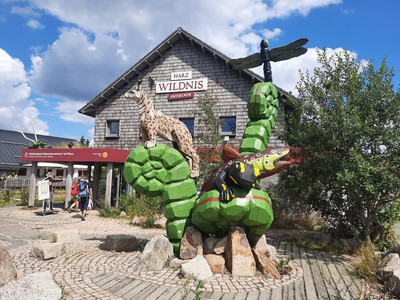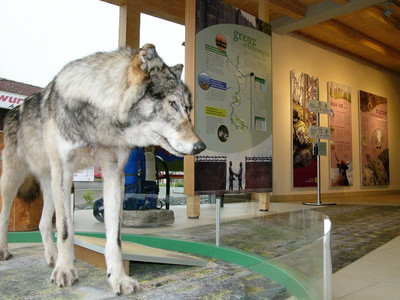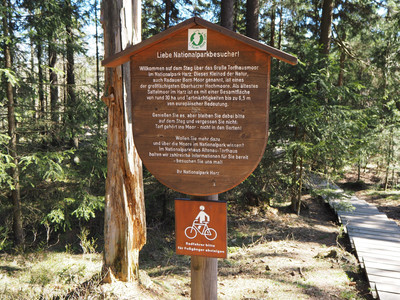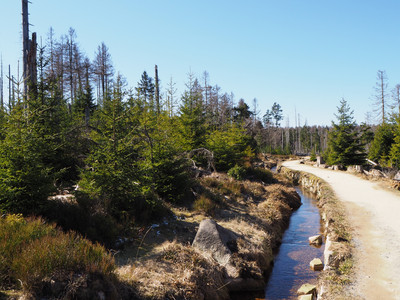Interesting circular route with botanical and faunistic highlights.
The starting point for this circular route is the National Park Visitor Center TorfHaus – here you can get information, brochures, and hiking maps.
Large Torfhaus Moor
On the Goetheweg (hiking trail 10 F) we reach the Large Torfhaus Moor, also called Radauer Born Moor, and can cross it on a boardwalk. A raised bog like this receives its nutrients exclusively from rainwater. It is therefore an extremely nutrient-poor habitat – only adapted animals and plants live here. The term "raised bog" comes from the swelling in the center of the moor. The diversity and dynamics of the moors of the Harz National Park are unique in Europe – a natural heritage of international importance. Please help preserve this value by not entering the sensitive moor areas.
Abbegraben: cultural monument and environmental problem?
The Goetheweg is accompanied by an artificial watercourse – the Abbegraben. Goethe did not know it yet – it was built only in 1827. The 1.5 km long ditch is part of the "Upper Harz Water Management", the historical energy supply system of the Upper Harz mining industry. This cultural monument, consisting of 107 historic ponds, 310 kilometers of ditches, and 31 kilometers of underground watercourses, was added to the UNESCO World Heritage list as natural and cultural heritage in 2010. As important as the Abbegraben was for mining, it is disadvantageous for the moors. To supply it, there are numerous side ditches that drain the areas of the Magdbettmoore above. Therefore, the national park has restored many of these ditches.
Kaiserweg
We follow the Goetheweg to the intersection with the Kaiserweg. The Goetheweg continues to the right towards the Brocken. Our hike, however, leads us to the left – we now follow the Kaiserweg (hiking trail 35 E). This ancient trade route crosses the Harz from Harzburg and Königskrug to Nordhausen.
Moor spruce forest
Soon we reach a bridge and cross the Abbe mountain brook. Looking to the left towards the Large Torfhaus Moor, we see a moor spruce forest. This natural forest community is a "battle zone" of the forest and forms at the edges of the moors. At the next intersection, we leave the Kaiserweg and turn left, then left again, towards Torfhaus (ski huts) to the Schubenstein (803 m). Here we meet the WaldWandelWeg. On a short detour, we can observe the forest in its own dynamics.
Old peat cut
Shortly before the end of our hike, we pass an old peat cut on the left side. The cut walls covered with spruces and dwarf shrubs in the background give an impressive impression of the thickness of the peat deposits in the Large Torfhaus Moor.







